
銀座公式ウェブサイト
-
Top
Top -
Explore Ginza
Explore Ginza
-
Announcements ・ Updates
Announcements ・ Updates
-
Town Guide・Tourist Information
Town Guide・Tourist Information
-
Column
Column
Explore Ginza
Announcements ・ Updates
More about Ginza
旦ナビ
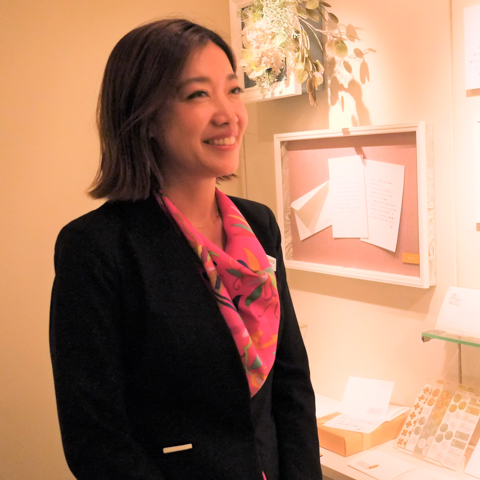
「Enriching the mind with “colorful harmony” and “soothing flavors” of Japan」
2018.11.01
In this edition we welcome Ms. Shinobu Mitsuoka, President of G.C.Press, a stationery brand that manufactures and sells original stationery products, including writing paper and envelopes, cards, and stamps.
We went for a stroll in Ginza to complete the mission proposed by Ms. Mitsuoka, “enriching the mind with ‘colorful harmony’ and ‘soothing flavors’ of Japan.”
Iseyoshi
Our first stop was “Iseyoshi,” located on Kopamru-dori, where the Komparu-ryu (Komparu school) of Nohgaku theatre originated. Iseyoshi is a long-established kimono store with a history of 140 years.
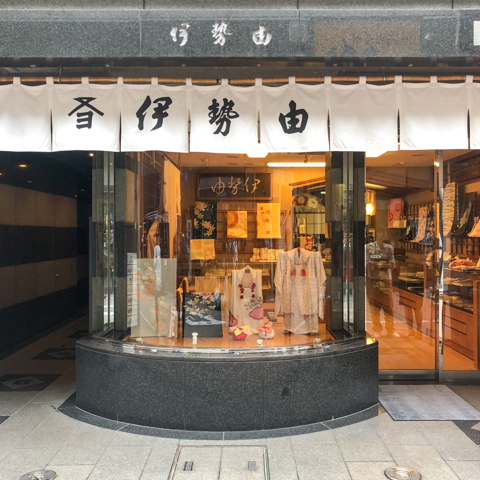
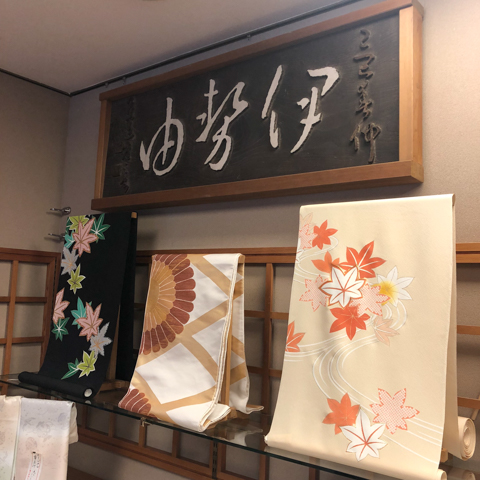
The store was established in 1878 (Meiji 11) in Nihonbashi and moved to Ginza in 1933 (Showa 8). Its customers include Kabuki actors’ wives, and professionals in the world of Japanese arts, such as tea ceremony and traditional Japanese music. For those who are not used to wearing a kimono, the store lately also sells kimono and obi that can be put on easily. There are also small and chic Japanese accessories that would make perfect gifts.
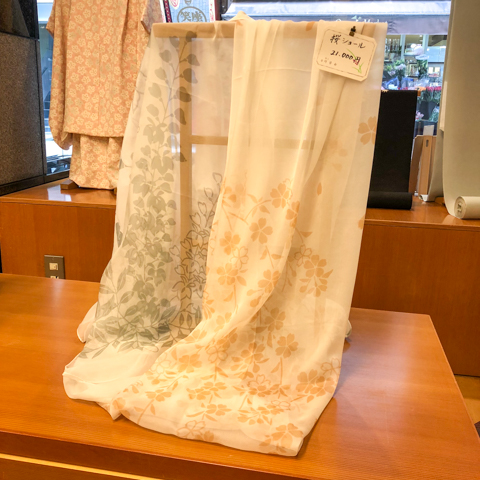
This is a “Japanese pattern shawl” (21,000 yen, including tax) with soft colors that are even more beautiful when put on. With a full length of 180cm, it can be used as a stole for both kimonos and Western-style dress.
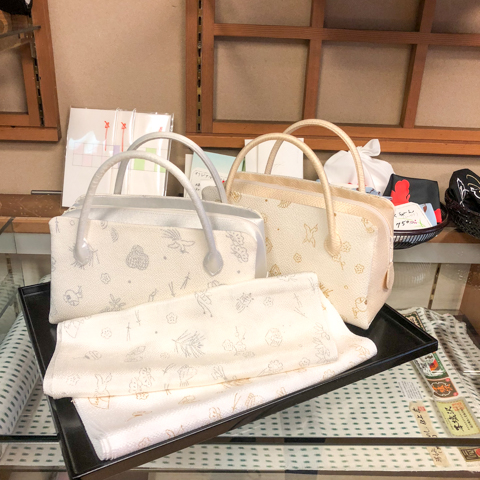
These are “Rikyu” bags (a rectangular bag that stands on its own) (47,000 yen, including tax) and “obiage” (kimono sash) (12,500 yen, including tax) with a variety of lucky items printed on them.
How lovely it would be have a bag matching your “obiage.”
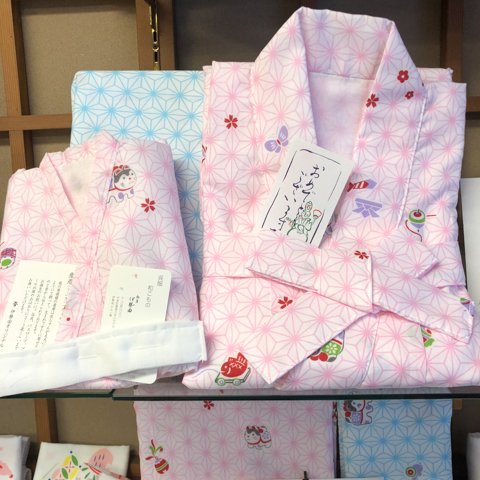
These are “Asa-no-ha (hemp leaf pattern) swaddling clothes” (3,700 yen, including tax), which have been their bestseller for decades. This year, “Mom’s pajamas” (9,000 yen incl. tax) have been newly added to the collection. Sheets and baby towels also come in the same pattern, allowing customers looking for a baby gift to select a combination of items according to their budget.
All of Iseyoshi’s products feature original patterns and every piece is carefully made, so it may be exciting to discover patterns and colors depicting seasonal events and nature that are unique to kimonos. Iseyoshi receives many foreign customers every day.
The inquisitive customer can learn about seasonal color combinations and patterns expressed by the stylish Japanese “iki” spirit, and at the same time feel a sense of comfort surrounded by such beauty.
Ginza Konparu-dori Iseyoshi8-8-19 Ginza, Chuo-ku, Tokyo
Store hours: 11:00 – 18:00
Closed on Sundays and holidays
http://ginza-iseyoshi.co.jp





Ginza Murata
Our next stop was another kimono store in Ginza 6-chome, “Ginza Murata.”
Ginza Murata is a long-established business, founded during the Bunsei years during the Edo period. They were bag merchants and in the money exchange business before they came to specialize in Yuki pongee more than one hundred years ago. They started to sell kimonos in general when the former (fifth-generation) owner ran the store.
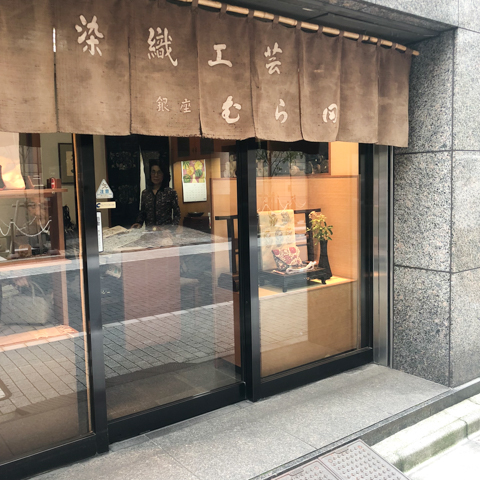
The store exhibits beautifully dyed textile that are traditionally handcrafted by artisans in different parts of Japan. The products vary from season to season, and we were introduced to the latest works.
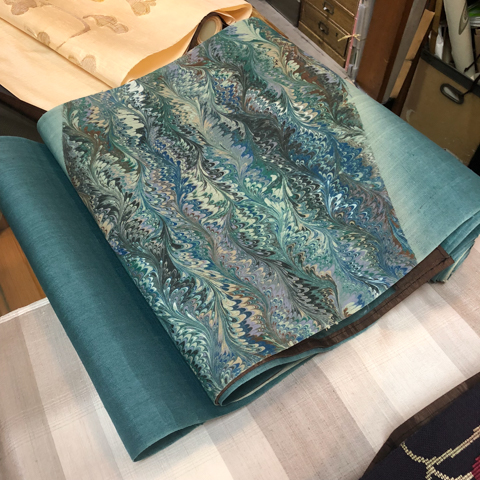
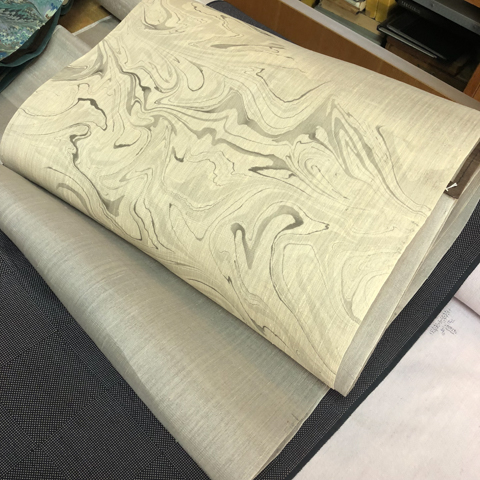
The unique marbled obi (both in color and monotone) are just an example of the many distinctly and beautifully designed works on display. Their mysterious beauty made me feel as if I had slipped into a museum.
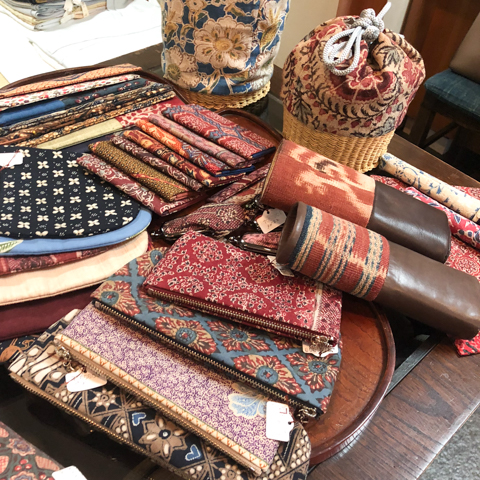
Ginza Murata also has a rich collection of exclusively designed accessories, as well as handbags and “Sukiyabukuro” purses (to carry tea ceremony items) made from antique fabric from more than one hundred years ago, that would be appreciated at tea ceremonies and as gifts.
The owner is always dressed in a kimono. When we visited the store, she was chicly dressed in a grey pongee kimono with a Persian calico obi. Ginza Murata welcomes consultations about kimonos in general, including maintenance, alteration, and kimono coordination, and I would suggest making a casual stop there.
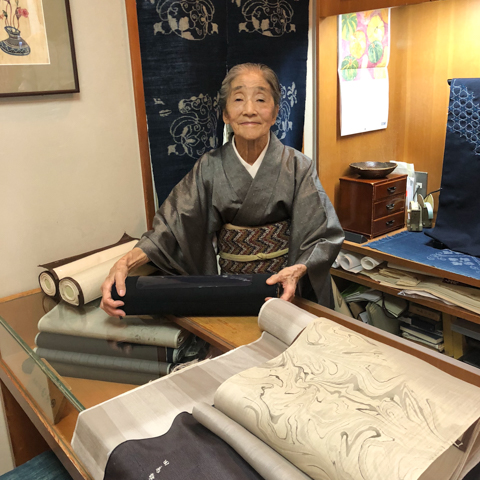
I was deeply content just gazing at the unique marbling, which was absolutely beautiful and enchanting. I am now tempted to go out in a kimono, like Mitsuoka-san, who is very fond of kimonos.
Ginza Murata6-7-7 Ginza, Chuo-ku, Tokyo, Urano Building 1F
Store hours: Monday – Saturday 10:30 – 18:00
Closed on Sundays and holidays (Open until 18:00 during exhibitions)
http://www.ginzamurata.co.jp





Ginza Kanoko
Our last destination was the main store of Ginza Kanoko, strongly recommended by Mitsuoka-san as a Japanese tea room that serves delicious “mochi” (rice cakes) all year round.
Ginza Kanoko is located very close to the Ginza 4-chome intersection and we had a good view of Wako Department Store and the townscape of Ginza from the tea room on the second floor.
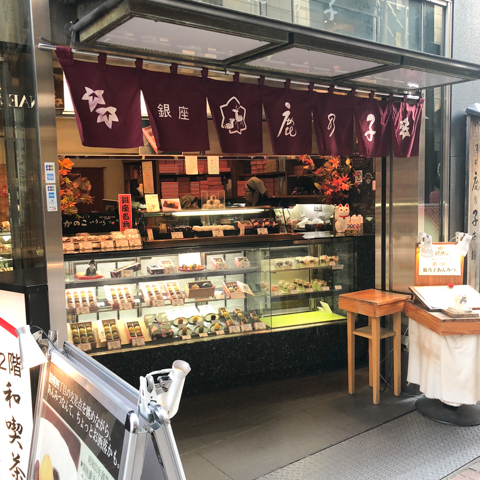
The store is famous for its “Kanoko” a Japanese confectionary covered with sweet chestnut and beans of five different colors which is sold on the first store along with other confectionaries.
We ordered a “Kanoko An-mitsu” along with Mitsuoka-san’s favorites, the “Zohni” and “Isobe-mochi.”
Their menu offers has a variety of items, including not only desserts such as “An-mitsu” (a dessert with small cubes of agar jelly, anko (sweet azuki bean paste), boiled peas, and rice flour dumplings) and “Kaki-gori” (shaved ice) but also “Ozoni” (a soup containing mochi rice cakes) and “Okowa” (steamed sticky glutinous rice mixed with vegetables or meat).
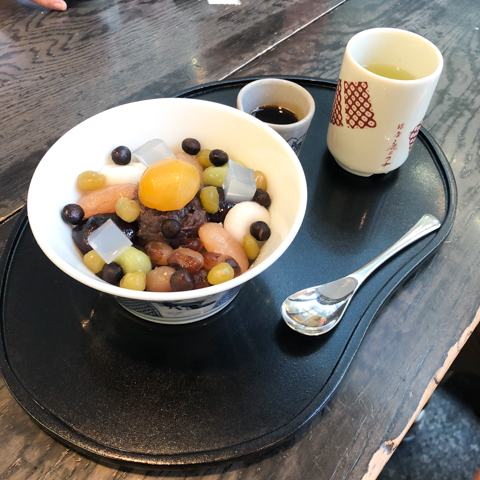
The popular “Kanoko An-mitsu” (1,380 yen, without tax) is the perfect fusion of plump boiled peas and beans, chewy “shiratama” (rice flour dumplings) and elegant “tsubu-an” (coarse sweet azuki bean paste).
The “An-mitsu” was full of large and shiny scarlet runner beans and other colorful beans. According to Mr. Ogawa, the President of Kanoko, they select large beans because the larger the beans, the stronger the taste.
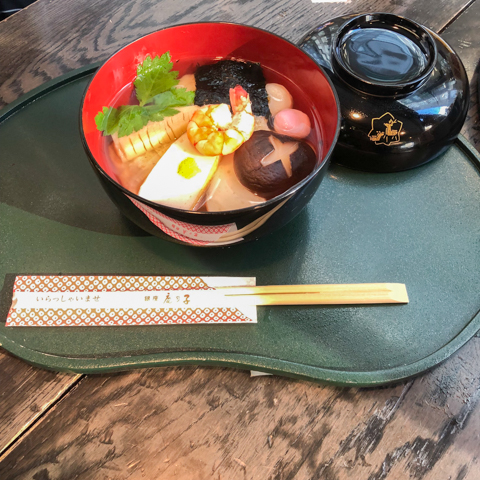
The “Ozoni” (1,380 yen, without tax) is made with a savory broth. Containing three pieces of mochi, it was quite filling.
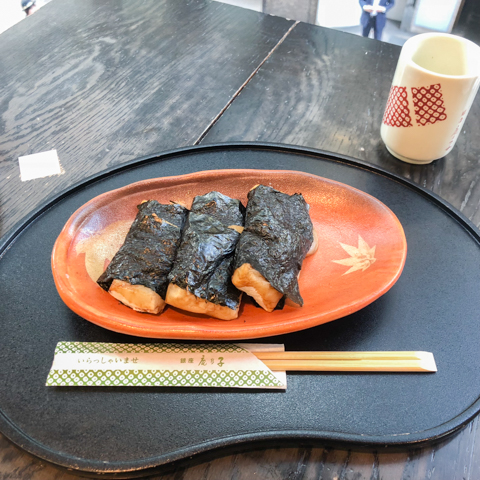
The “Isobe-mochi” (1,180 yen, without tax) was made with freshly pounded mochi. It was very soft and the soy sauce and nori (laver) is quite appetizing.
The mochi is made from sticky glutinous rice produced in Niigata Prefecture and is freshly pounded at their factory.
It was a pleasure to join Mitusoka-san on her luscious and enriching weekend stroll.
Ginza Kanoko5-7-19 Ginza, Ginza Suzuran-dori, Chuo-ku, Tokyo
Store hours
Sunday -Friday
Shop (First floor) 10:30~19:00 Tea Room (Second floor) 11:30~19:00(18:45 L.O)
Saturdays and day before holidays
Shop (First floor) 10:30~20:00 Tea Room (Second floor) 11:30~20:00(19:45 L.O)
Closed on New Year’s Day
http://kanoko.la.coocan.jp




プロフィール

成田 美織
2017ミスアース群馬代表・全国大会4位ミス・ファイアー受賞。同年2017Miss Tourism queen of the year世界大会へ日本代表として出場し、各国の出場者達の投票によって決まる、ミスフレンドシップ賞を受賞。現在はモデル・MCとして活躍中。
All List
- Delicious sweets and tea, and coffee
- Refreshing in Ginza and discovering your new self
- Restaurants that serve the best meat
- Locations in Ginza that can be enjoyed with children
- ”Omotenashi” in Ginza for foreign guests
- Dining spots to recharge and be ready for tomorrow
- Feeling at home with neighbors
- A variety of “kawa” in Ginza
- Indulging in music and food in Ginza
- My favorite flavors of Ginza
- Ginza, my birthplace and playground… places from my childhood here and there…
- Favorite destinations that have recently reopened after renovation
- Three places that take me back to the basics
- Three seasonally inspiring stores
- Spending time with animals in Ginza
- Enriching the mind with “colorful harmony” and “soothing flavors” of Japan
- Three stores that let you find your way back to yourself
- Ceramics, sake, pleasure
- Shops that make you feel even more knowledgeable about Ginza
- Sports and Fitness in Ginza
- Fish hunting in Ginza!








